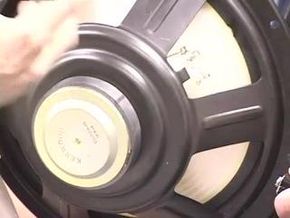There are several advantages to having a speaker box enclosure. For one thing, since the drivers are already locked into position, they wind up producing better sound. Enclosures are constructed out of material that absorbs the vibrations put out by the drivers. If a driver was left on a table, the vibrations generated by the table would cause a lot of the sound from the speaker to be drowned out. Ease of set-up is another benefit of the speaker box enclosure, since all the components are in one unit.
Furthermore, the speaker box enclosure causes sound to be produced in a specific way. As air enters the enclosure, it’s compressed by the driver diaphragm. Air that moves out of the enclosure is filtered by the driver diaphragm. As the diaphragm vibrates, it generates sound waves that reach the back of the cone. These “backward” waves are handled differently, depending on the specific enclosure type that’s in use.
Advertisement
The sealed enclosure is the most popular enclosure type on the market. Also known as acoustic suspension enclosure, the backward waves that are generated in this type of enclosure set up never leave the box. Since the air is trapped inside a sealed speaker box enclosure, the air pressure changes constantly. Once the driver moves in, pressure increases. Conversely, the level of pressure drops as the driver moves out. On the one hand, sealed enclosures aren’t as efficient as other designs since the amplifier must constantly increase the electrical signal in order to handle the air pressure. On the other hand, the force generated by the air pressure keeps the driver exactly where it’s supposed to be. As a result, the sound that’s produced is tighter and more precise.


